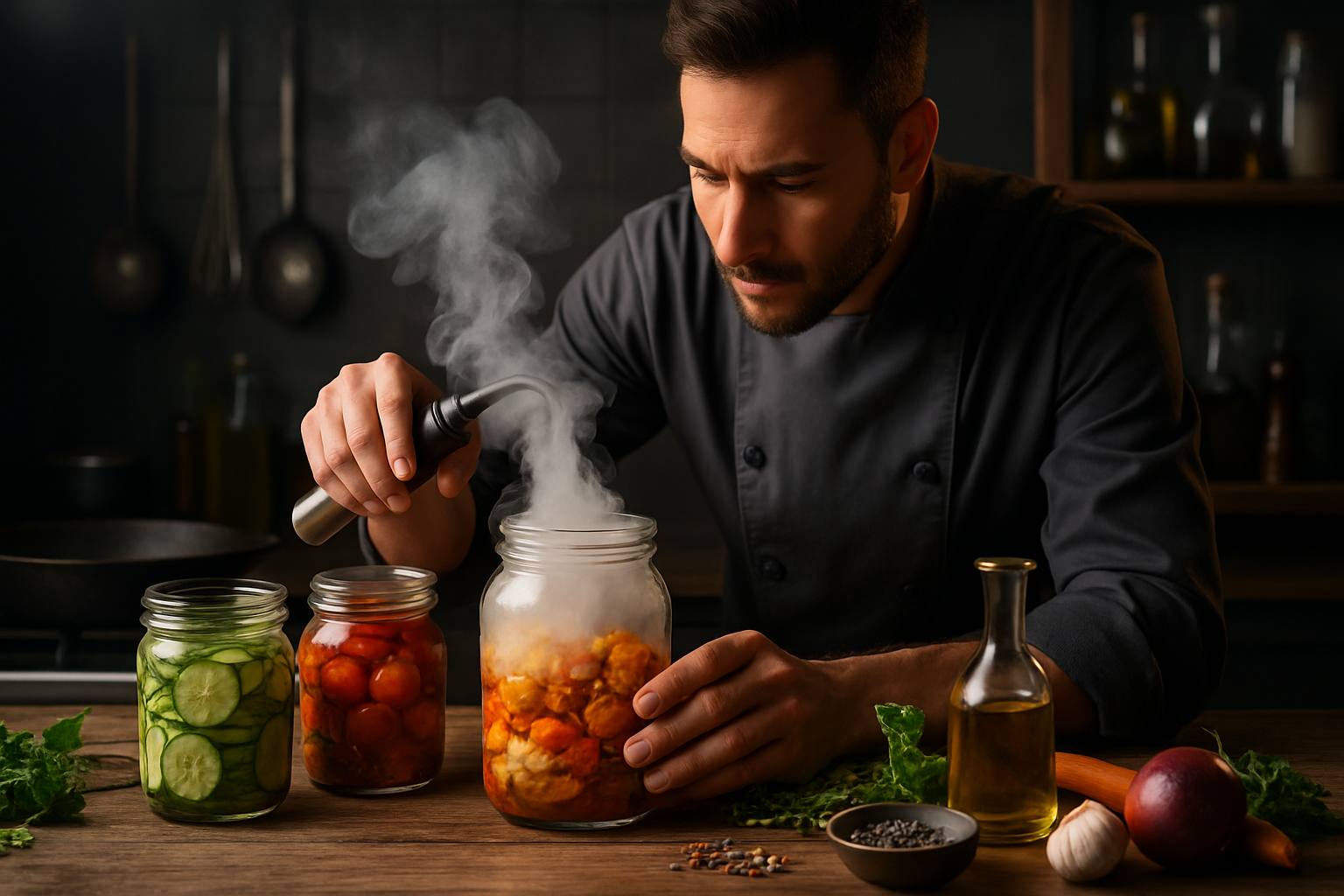Culinary Alchemy: Transforming Humble Ingredients into Gourmet Delights
Elevate your cooking game and turn everyday ingredients into extraordinary dishes. This culinary journey explores innovative techniques and creative pairings that will transform simple staples into gourmet masterpieces, impressing your guests and delighting your taste buds.

Texture Transformation Techniques
Texture plays a crucial role in how we perceive and enjoy food. By manipulating the texture of common ingredients, you can create entirely new dining experiences. One technique to explore is spherification, popularized by molecular gastronomy but achievable at home. This process involves encapsulating liquids in a thin gel membrane, creating bursts of flavor when eaten. Try making “caviar” out of fruit juices or balsamic vinegar to add an unexpected pop to salads or desserts. Another texture-altering technique is flash-freezing using liquid nitrogen. While this requires special equipment and safety precautions, it can instantly transform fruits or herbs into crisp, shattering shards that melt in your mouth. For a simpler approach, experiment with dehydrating fruits and vegetables to concentrate flavors and create crispy garnishes that add both taste and visual appeal to your plates.
Smoke and Mirrors: Infusing Unexpected Flavors
Smoking isn’t just for meats and fish; it’s a versatile technique that can add depth and complexity to a wide range of ingredients. Invest in a handheld food smoker to infuse unexpected items with aromatic wood smoke. Try smoking cocktails by capturing smoke in a glass before pouring in your drink, or smoke butter to spread on bread for an instant upgrade to your dinner table. Experiment with smoking delicate items like fresh herbs, which can then be used to garnish dishes or infuse oils. For a sweet twist, try cold-smoking chocolate or fruits like strawberries for a unique dessert experience. The key is to balance the smoke flavor with the natural taste of the ingredient, creating harmonious and intriguing flavor profiles that will surprise and delight your guests.
The Art of Flavor Pairing
Understanding flavor pairing principles can help you create innovative and delicious combinations that elevate simple ingredients. Start by exploring unexpected pairings based on shared flavor compounds. For example, strawberries and basil share linalool, a compound that gives them their distinct aromas. Combining these ingredients in a savory dish, like a strawberry-basil salsa for grilled fish, can create a harmonious and surprising flavor profile. Another approach is to pair contrasting flavors for balance and excitement. Try combining bitter dark chocolate with spicy chili in a mole sauce, or pair tart citrus with rich, fatty foods like duck or avocado. Keep a flavor wheel handy and challenge yourself to create dishes that incorporate flavors from different parts of the spectrum, pushing your culinary boundaries and discovering new favorite combinations.
Reimagining Presentation: Edible Art
The visual appeal of a dish can significantly enhance the dining experience. Take inspiration from modern art and nature to create visually stunning presentations that transform humble ingredients into works of edible art. Use squeeze bottles to create precise dots and lines of sauces or purees on the plate. Experiment with unconventional plating surfaces like slate tiles, wooden boards, or even edible “plates” made from large leaves or flatbreads. Incorporate edible flowers and microgreens not just as garnishes, but as integral parts of the dish’s flavor profile and visual composition. Play with height and negative space on the plate to create drama and draw the eye to specific elements. Remember that each component should serve both a visual and flavor purpose, ensuring that your artistic creations are as delicious as they are beautiful.
Culinary Alchemy Tips & Facts
• Utilize a sous vide machine to perfectly cook proteins and infuse flavors with minimal effort
• Experiment with unusual spice blends like za’atar or ras el hanout to add complexity to simple dishes
• Try aging vegetables like carrots or beets to concentrate their flavors and create unique textures
• Use activated charcoal powder to create dramatic black-colored dishes with a subtle earthy flavor
• Explore the world of edible clays and powders to add unique textures and visual interest to plates
In conclusion, culinary alchemy is about pushing boundaries, experimenting with techniques, and reimagining familiar ingredients. By embracing these innovative approaches, you can transform your home cooking into a gourmet experience that rivals high-end restaurants. Remember, the most important ingredient is your creativity – so don’t be afraid to experiment, make mistakes, and discover your own unique culinary voice. Happy cooking!





